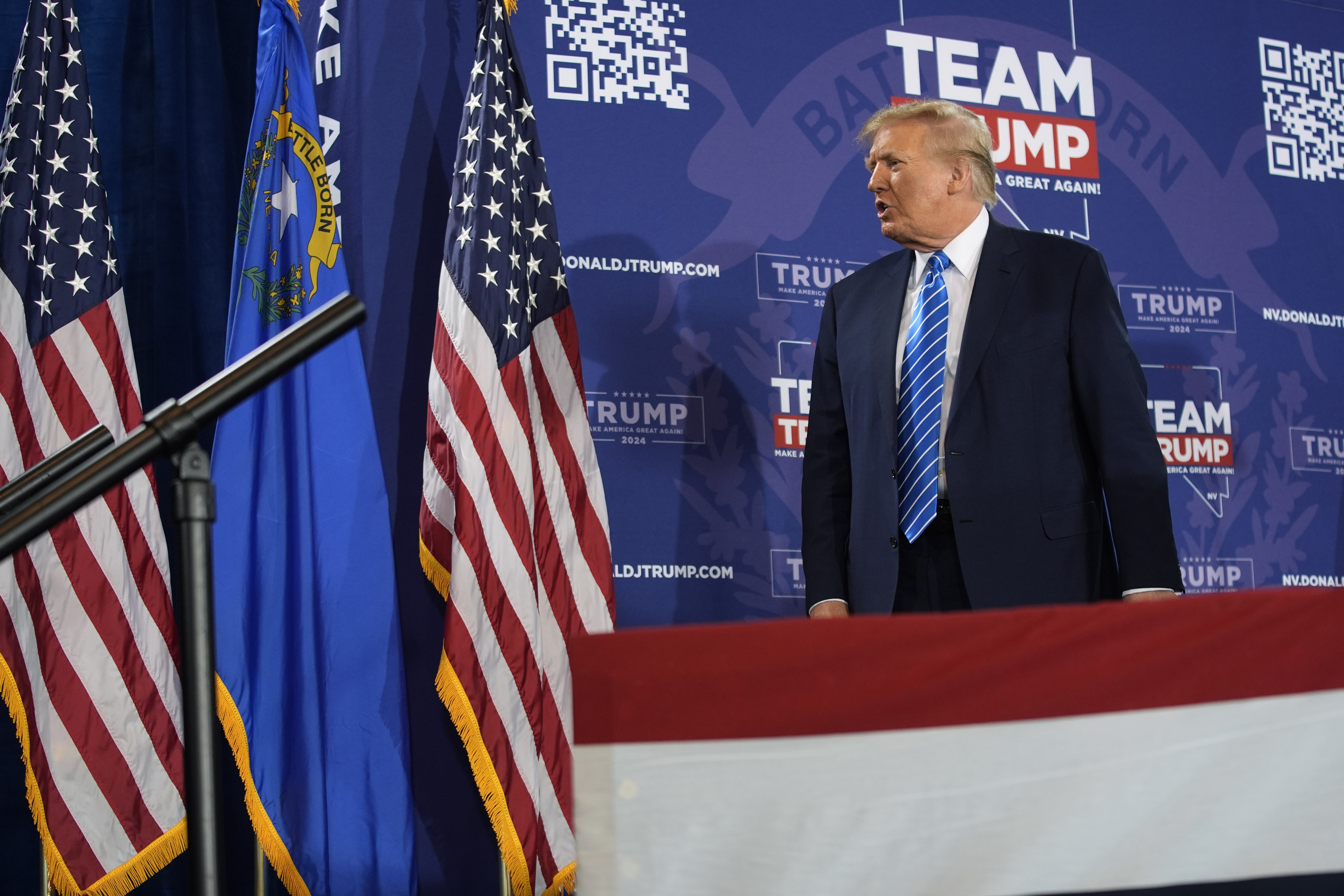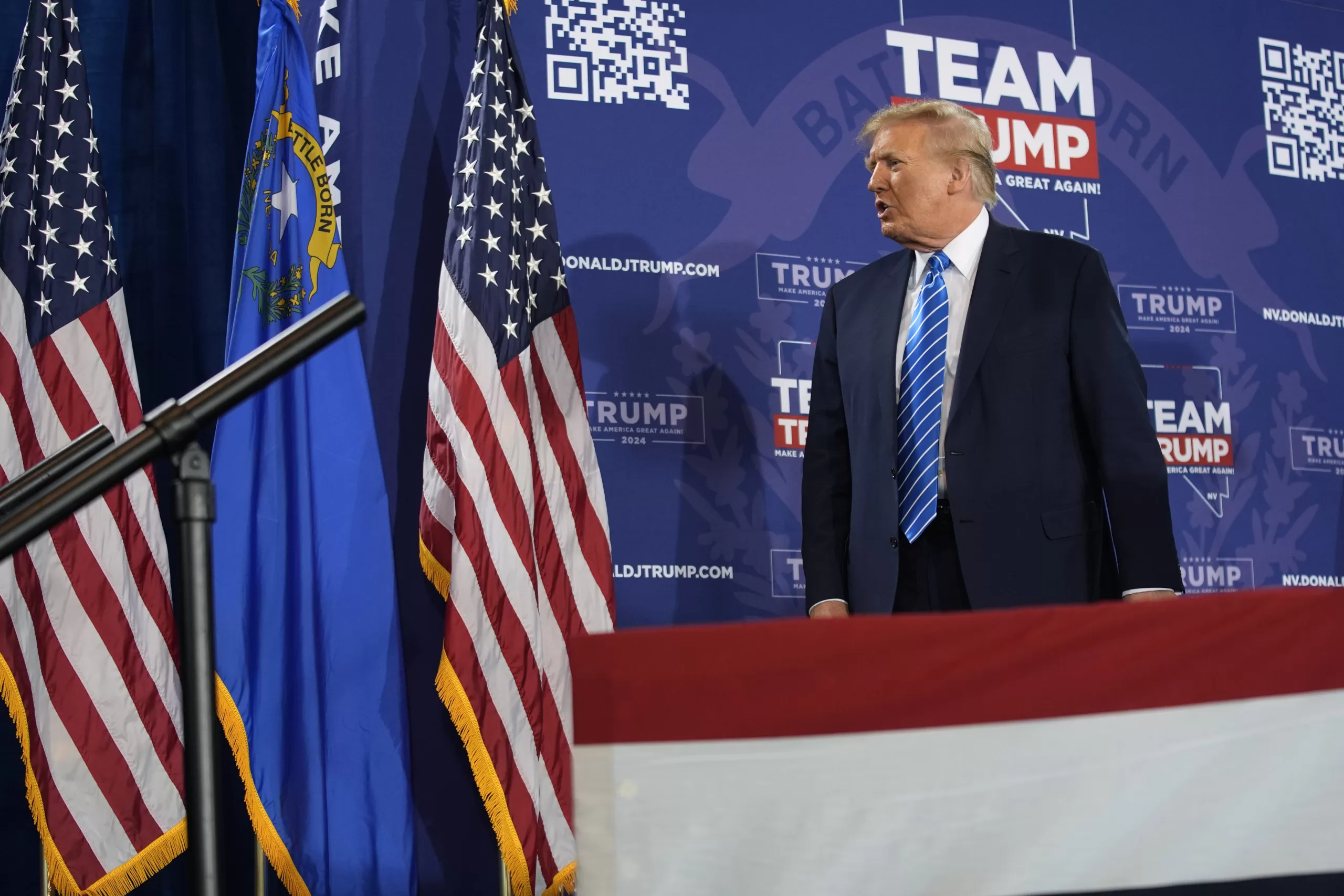
Biden spent months slowly building his campaign operation before ramping up significantly at the end of the year. Across his various committees and fundraising vehicles, Biden entered the year with more than $117 million in cash, even after spending more over the final three months of 2023 than in the first nine months combined.
Trump’s filings, on the other hand, show that while trying to fend off his Republican rivals for the nomination, he’s had to fund his various legal defenses, including efforts simply to keep his name on the ballot amid pushes to boot him under the Constitution’s 14th Amendment.
The reports shed a little light on former South Carolina Gov. Nikki Haley’s campaign as the GOP’s final Trump alternative, though they only cover activity through the end of 2023 and don’t include any of the immediate run-up to the Iowa caucuses or New Hampshire primary. Haley and her super PAC became favorites of Republican big donors late last year, though it’s not clear whether that will be sufficient to sustain her past the Feb. 24 South Carolina primary.
In Senate races, the new reports showed the parties’ respective establishments are unafraid to get involved in primaries and provided clarity entering the final sprint before primaries next month in races from Ohio to California.
Here are five takeaways from the latest reports with the Federal Election Commission:
Trump can raise a ton of money. His legal expenses are costing him even more.
Trump’s joint fundraising committee, the primary fundraising vehicle for his presidential campaign, brought in a whopping $75 million in the second half of the year. The former president’s strength continues to be with small-dollar donors, who accounted for more than one third of that total.
But Trump’s campaign and his affiliated groups are burning through cash at an even faster rate than he can fundraise. Across five connected groups, Trump spent more than he raised in 2023. And that spending is driven in large part by his legal woes. Two of his political committees spent a combined $50 million on legal expenses in 2023 – his biggest single expense category, with more spent on legal than advertising, payroll or other typical campaign expenditures.
MAGA Inc., a super PAC supporting Trump’s campaign, had to refund tens of millions of dollars to his leadership PAC to help cover those legal expenses, underscoring how legal challenges draw from money that could have been used to boost Trump as a candidate (although the group was still able to spend nearly $44 million on independent expenditures in 2023).
Trump still has plenty of cash in the bank and the ability to raise more of it. But the legal spending highlights a real challenge for the former president entering the election year: he is diverting an increasing share of his resources from the campaign to address his legal woes. And that is likely to keep being costly.
Biden has the money, but his spending so far hasn’t moved the needle.
Between his campaign, other PACs and the Democratic National Committee, Biden entered this year with roughly $117 million in cash on hand, though that’s significantly less than Trump’s campaign and the Republican National Committee had combined going into 2020 ($174.8 million).
Biden accelerated his spending over the final three months of 2023 — with little to show for it. His campaign spent $19.3 million in the fourth quarter of last year, more than the first three quarters of the year combined (just over $14 million).
Of that spending, some $12 million was on advertising. The Biden campaign has engaged in a sustained ad campaign across seven battleground states — Arizona, Georgia, Michigan, Nevada, North Carolina, Pennsylvania and Wisconsin — since last August. But during that time, polls from the battleground states generally show him falling behind Trump.
Biden and his allies have the money to stay on the air. Just this week, Future Forward PAC, the Biden-blessed super PAC, began reserving
what it said will be $250 million worth of ads for the fall. Last month, Future Forward officials said the group
raised $208 million in 2023 alone between the super PAC and its nonprofit arm, which funnels money into the super PAC without disclosing its donors.
Haley’s campaign had a disciplined budget. But she can’t match Trump’s small-donor enthusiasm.
There are a lot of reasons the former U.N. ambassador is the last Republican standing in the primary against Trump. But an underrated one is that she has the money to do so. Compared to some of her now-departed rivals, like Florida Gov. Ron DeSantis, Haley spent conservatively in the early months. Her campaign raised $17.3 million and spent $14.3 million in the final quarter of last year, and she entered January with another $14.5 million in the bank.
A lot has happened since then, but that kind of cash is one of the reasons Haley can make her case to stay in the race through the Feb. 24 primary in South Carolina and even Super Tuesday.
But how Haley has raised her money also says a lot about her campaign — and why she is struggling to catch Trump. Across her campaign committee and her joint fundraising committee, Haley has raised roughly $10.6 million from donors giving less than $200, according to a POLITICO analysis. That’s just a fraction of the small-dollar support Trump received over the same period.
Small-dollar support is not only an important fundraising tool — small donors can give again and again — but can be indicative of where the party’s most fervent supporters lie. Trump’s continued strength with small donors reflects the grip he has on the Republican Party’s base, an advantage he maintains over Haley headed into the next set of primaries.
Republican Senate primaries drew early spending — from both parties.
Both parties have adopted interventionist stances in Senate primaries — specifically Republican primaries. The 2024 Senate map heavily favors the GOP, but the party has a history of nominating weaker or more extreme candidates who’ve lost otherwise winnable races.
That’s led Democrats to attack Montana Senate candidate Tim Sheehy, a political newcomer who’s the preferred candidate of the National Republican Senatorial Committee in one of 2024’s most competitive races. In
its filing on Wednesday, Last Best Place PAC, which is opposing Sheehy, disclosed that all of the $2.1 million it collected in 2023 was from Majority Forward, a nonprofit group closely linked to Senate Majority PAC, a top Democratic super PAC.
The spending serves a dual purpose of trying to define Sheehy negatively early ahead of a possible matchup with Democratic Sen. Jon Tester — and also possibly softening up the first-time candidate for a potential primary matchup with Rep. Matt Rosendale, who’s mulling a run. Last Best Place PAC has been the top spender so far on the Montana airwaves, according to AdImpact data.
Republicans, meanwhile, are also done sitting on the sidelines after a number of cycles with a hands-off policy — including the NRSC’s laissez-faire approach in 2022 under then-Chair Rick Scott (Fla.). In a sign the party apparatus is firmly behind Sheehy, the NRSC began running hybrid ads with his campaign this week.
Another example from Wednesday’s filings: In early December,
Senate Leadership Fund, the super PAC with close ties to Senate Minority Leader Mitch McConnell (Ky.), sent $895,000 to Conservative Americans PAC, which is supporting West Virginia Gov. Jim Justice’s Senate bid. The contribution came about a month after Democratic Sen. Joe Manchin’s retirement. Republicans will be heavily favored to flip the seat, whether the party’s nominee is Justice or GOP Rep. Alex Mooney.
Favorites emerged in other Senate primaries.
The new reports brought some definition to other competitive Senate primaries, particularly those that will be decided during the first half of this year.
In Ohio’s March 19 GOP primary to face Democratic Sen. Sherrod Brown, businessperson Bernie Moreno was the top spender during the fourth quarter, doling out $3.8 million — most of it before Moreno
landed Trump’s endorsement in December, which could give him a leg up over Secretary of State Frank LaRose and self-funding state Sen. Matt Dolan.
Democratic Rep. Adam Schiff had another strong fundraising quarter ahead of California’s March 5 Senate primary, collecting $6.3 million and growing his cash-on-hand figure to a presidential-level $34.9 million. He’s been spending big since the start of the new year — running TV ads in the pricey Los Angeles and San Francisco markets — and has the cash to do it.
Fellow Democratic Reps. Katie Porter and Barbara Lee are lagging behind, as each vies with Republican Steve Garvey for the second spot in the November general election. Porter, notably, saw her typically strong fundraising decline slightly in the final three months of 2023: She raised $3 million, down from $3.4 million in the previous quarter.
In New Jersey, Tammy Murphy, the wife of Democratic Gov. Phil Murphy, got off to a strong start, bringing in $3.2 million. But many of Murphy’s donors have already “maxed out” — given the maximum $6,600 allowed under federal law — compared to Democratic Rep. Andy Kim, who is
relying heavily on smaller donors. Those small donors are more expensive to cultivate — Kim outspent Murphy roughly two-to-one for the quarter — but can potentially give the three-term congressman more money through this year.
